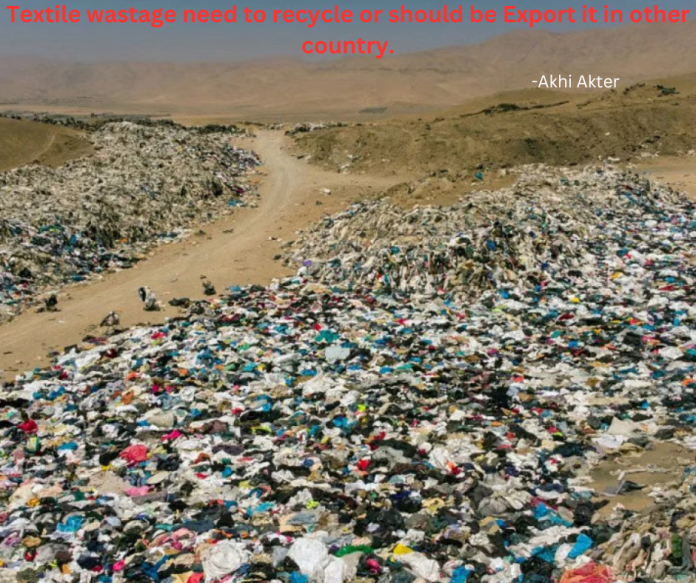Introduction
One of the world’s major centers for the production of textiles and clothing has quickly emerged as Bangladesh. Although this sector of the economy contributes significantly, it also generates a sizable amount of textile waste. Bangladesh’s approach to managing textile waste is a serious problem that has to be addressed right now.
This article examines the problems caused by textile waste in Bangladesh and presents sustainable management strategies that may be used to lessen the negative effects on the environment.
The Scale of the Problem
Over the past few decades, Bangladesh’s textile and apparel sector has seen exponential growth, creating millions of jobs and making a sizable contribution to the country’s export earnings. But this quick expansion has produced a worrying quantity of textile waste. The nation is said to produce hundreds of tons of textile waste annually.
Challenges in Textile Waste Management
Ø Lack of Awareness: The lack of knowledge among consumers, producers, and policymakers on the environmental effects of textile waste is a serious challenge in Bangladesh.
Ø Limited Enforcement of Regulations: Although there are certain rules governing waste management in the textile sector, enforcement is sometimes slack, allowing many companies to eschew proper disposal and recycling methods.
Ø Poor Working Conditions: Employees working in the textile industry’s waste management department frequently encounter dangerous situations and are not given the essential safety gear.
Textile Waste Management Solutions
Ø Consumer Education: It is essential to educate customers about the negative environmental effects of rapid fashion and the value of wise consumption. Encouragement of behaviors like garment donating and thrift store shopping might lessen the amount of clothes disposed of in landfills.
Ø Recycling Initiatives: Bangladesh may support textile recycling facilities that effectively process waste materials and transform them into new goods or resources by investing in and promoting them.
Ø Government Policies: The government can tighten and enforce rules pertaining to textile sector waste management. By putting Extended Producer Responsibility (EPR) laws into place, producers might be held accountable for every stage of the product’s life cycle, including waste disposal.
Ø Innovation in Environmentally Friendly Materials: The manufacture of textiles can have a smaller negative environmental impact if sustainable and environmentally friendly materials are developed and used. Sustainable alternatives include hemp, recycled polyester, and organic cotton.
Ø Collaboration with International Organizations: International organizations that focus on waste management and sustainable fashion may provide vital knowledge and resources to the effort to solve the problem.
Conclusion:
For a more sustainable future, it is crucial to address textile waste and improve its management. Individuals, fashion companies, and governmental organizations can all use a variety of ways to address this urgent issue, such as lowering consumption, promoting recycling, and embracing circular concepts. The textile sector can support a circular economy by working together to reduce waste and ensure a more environmentally friendly and ethical approach to fashion.
Researching Source: The Daily Star, Google
Akhi Akter
Batch: 221
Green University of Bangladesh


